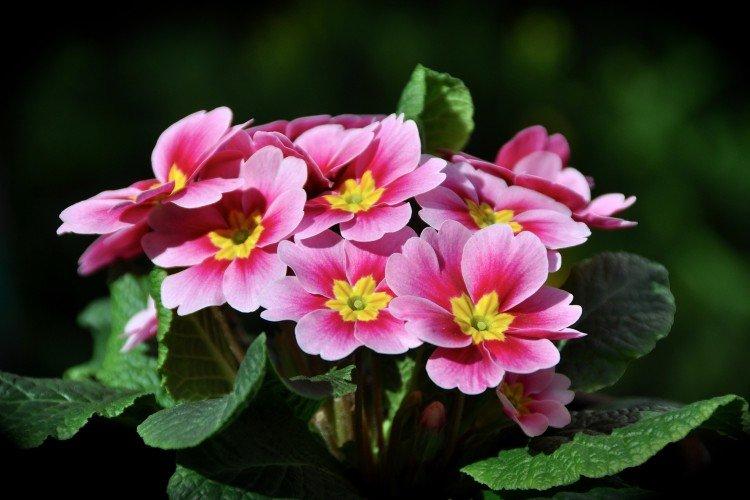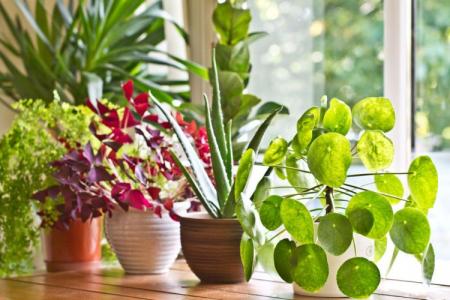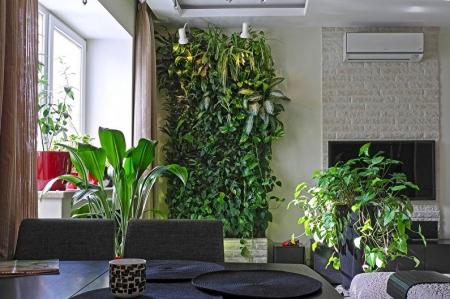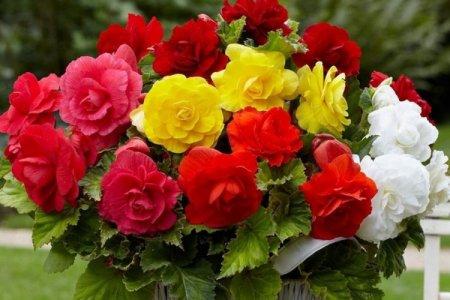
Not all home flowerpots are equally safe and harmless. This must be taken into account if you have children or pets. In addition, it is even better to transplant some flowers with gloves in order to definitely avoid problems. We have compiled a catalog of poisonous indoor plants that will help you navigate which of your green friends should expect a trick!
1. Adenium
The unusual desert rose fell in love with its combination of unique appearance and unpretentiousness. But remember that once upon a time the ancient tribes even used its juice to impregnate poisoned arrows.

2. Zamioculcas
Although this plant can be found almost everywhere, it is also not so simple with it. Its juice is quite poisonous, so it should never get into your eyes or mouth.

3. Azalea
Unexpectedly, the beautiful azalea can be quite dangerous. Its leaves contain a substance that leads to poisoning and arrhythmias when ingested.

4. Amaryllis belladonna
In this case, everything is clear. The alkaloids in its juice cause serious poisoning. Bulbs are especially dangerous. By the way, this plant was also used to create arrows.

5. Oleander
This flower is considered a good sign and a symbol of well-being. But its leaves, if ingested, can be fatal to the cardiovascular system.

6. Trichocereus
The beloved home cactus contains powerful hallucinogenic substances. Of course, in order to achieve a serious effect, you still need to try, but experimenting is not worth it.

7. Striped aloe
Unlike ordinary medicinal aloe, striped is categorically not used for medicinal purposes. Its juice is a powerful irritant that can cause internal bleeding and is especially dangerous for pregnant women.

8. Schefflera
Basically, the shefflera is dangerous only if it gets into the stomach, so take care of pets from it. Leaves and shoots can irritate sensitive skin.

9. Dieffenbachia
All green parts of the plant contain a substance that can cause severe allergic reactions and even burns. Dieffenbachia is dangerous for both humans and animals.

10. Hydrangea
The fabulous blooming hydrangea isn't the most dangerous guest on this list. You can even safely touch it with your hands, but it is strictly forbidden for the juice to enter the body. It is highly toxic!

11. Clivia
Klivia is loved for its exotic appearance, but its beauty hides the same exotic dangers. In high concentrations, clivia toxins can even cause paralysis.

12. Anthurium
The sap of the plant contains powerful acids that cause redness and allergies. If it gets on the mucous membrane, it is fraught with burns and edema.

13. Primrose
The adorable primrose should never be kept in a room during flowering because it releases toxins into the air. So hurry up and put the primrose on the street or balcony.

14. Plumeria
The graceful flower perfectly cleans the air, but not everything is so smooth with its juice. As with most things in this collection, it can cause serious irritation.

15. Ficus
Ficus is not poisonous in the literal sense of the word, but it is a powerful allergen and irritant. And to such an extent that its juice can leave serious burns.

16. Lilies
All varieties of lilies are dangerous primarily for pets. Because even pollen licked off the wool can provoke poisoning and kidney failure in the long term.

17. Ivy
Poison ivy stories have a purpose. In no case should children or animals pull beautiful sharp leaves into their mouths.

18. Pachypodium
This exotic guest has suffered the problem of many similar cacti with leaves.The juice contained in the fleshy stem is highly toxic, even if it comes into contact with the skin.

19. Poinsettia
Behind the decorative colored leaves of the Christmas flower hides the standard milkweed problems. Milky sap is easily and abundantly secreted at the slightest damage, but at the same time it is quite toxic.

20. Monstera
The monstera still has the same classic story. Its leaves contain strong substances that can provoke irritation and toxic reactions. In no case should they be allowed to enter the esophagus.

21. Caladium
Another beautiful decorative leafy plant causes swelling and inflammation. If caladium leaves enter the mouth, swelling can block the larynx or even the airways.

22. Brunfelsia
The appearance of this fragile and delicate flower is very deceiving. Absolutely all parts of the plant are poisonous and contain neurotoxins.

23. Euphorbia
Other euphorbiases have already been in this collection, so you can't do without the most common representative of the family. Milkweed juice causes burns, and if ingested, toxic poisoning.

24. Cyclamen
Tubers of some cyclamen species are really dangerous, so they must be hidden from animals. This is especially true of the Persian cyclamen.

25. Brovallia
An elegant decorative bush can be transplanted or cut only with gloves. And in no case do not let the juice get on the mucous membranes or inside.




